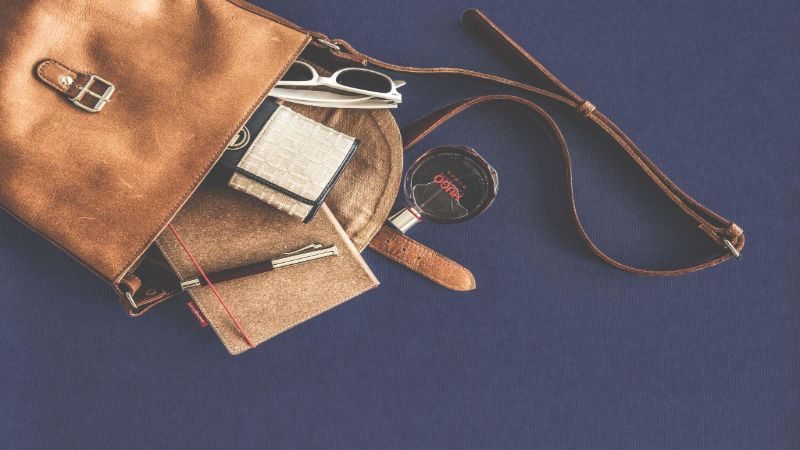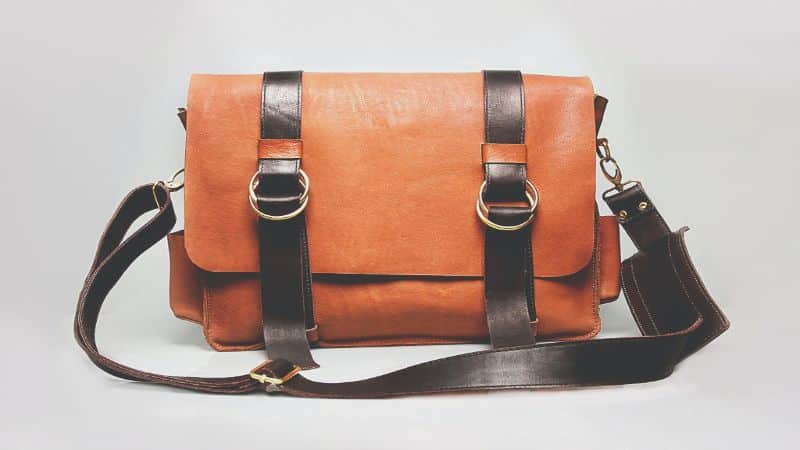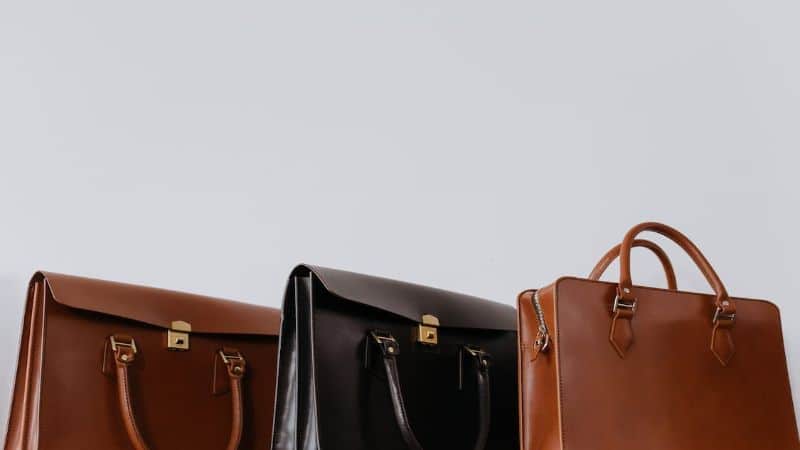Ever wondered how your trusty handbag came to be? From a simple pouch to a fashion statement, the journey of handbag making is both fascinating and intricate. Let’s dive into the world where craftsmanship meets style.

You’ll be amazed to discover the blend of traditional techniques and modern technology that goes into creating that perfect accessory. Whether it’s a sleek clutch or a spacious tote, there’s more to your handbag than meets the eye.
The Evolution of Handbags
Handbags have a storied history, shaping fashion and functionality through the ages. Originally, both men and women carried pouches. During the 15th century, these evolved into girdle pouches, which were hung from the waist—an emblem of status and wealth. The 17th century saw the advent of small pockets in women’s clothing, causing handbags to become more of a personal accessory rather than a necessity.
As you move through history, you’ll notice the Industrial Revolution brought about major changes. Travel became commonplace, and with it, the need for luggage styles that could carry a variety of personal items. This need gave rise to the modern handbag, evolving from mere practicality to a fashion statement.
In the 1920s, the iconic flapper dresses featured no room for pockets, so reticules—small, decorative handbags—became a widespread trend. The mid-20th century catalyzed a handbag metamorphosis, with fashion houses like Chanel and Hermes leading the charge. Their designs redefined luxury and established enduring style icons.
Here’s how materials in handbags diversified through different eras:
- Leather remained a staple for durability and elegance.
- In the 1950s, synthetic materials like vinyl were introduced.
- The 1960s and 1970s saw a rise in artistic expression with the use of suede, embroidery, and macramé.
- The 1990s brought about a surge in designer handbags made of exotic materials.
Today, handbags are not just for carrying essentials—they’re a symbol of personal style and identity. They come in a vast array of shapes, sizes, and materials, each with its own historical inspiration. Tech advancements have allowed for new methods in handbag creation while still honoring time-honored craftsmanship. The vast choices available underscore the handbag’s evolution from a practical item to a quintessential element of fashion.
In your journey through handbag history, you’ll discover each era’s signature style reflects the social and cultural shifts of its time.
Traditional Handbag Making Techniques
When considering how a handbag is crafted, it’s crucial to appreciate the traditional techniques that have been passed down through generations. Artisans wield a deep knowledge of materials and construction methods, many of which remain unchanged over time.
Initially, selection of materials takes precedent. Leather, a commonly chosen material for its durability, undergoes a tanning process to be usable for handbags. Once tanned, the leather is hand-cut to specific patterns. For artisans, precision in cutting is non-negotiable; it dictates the overall quality and symmetry of the finished product.
Stitching is another cornerstone of traditional handbag making. Saddle stitching, a technique involving dual needles, is often employed for its strength. Unlike machine stitching, this method ensures a more durable and long-lasting seam. Each stitch is a testament to the maker’s proficiency and attention to detail.
In traditional settings, hardware such as buckles and clasps are usually selected for both their functionality and their aesthetic contribution to the handbag. These elements are often applied by hand to assure proper placement and secure attachment.
Lining the handbag is another meticulous step. Fabric or leather linings are carefully cut and sewn into place, adding to the bag’s structure and sometimes providing an unexpected pop of color or texture.
The assembly process of a handbag is akin to building a structure; every piece must come together in a precise and thoughtful manner. Corner reinforcements, gusset construction, and secure fastenings all serve a purpose beyond mere aesthetics—they ensure durability and usability for the owner.
As the handbag takes shape, finishing touches are applied. Edges may be hand-painted or burnished, metal hardware polished, and excess threads trimmed. Although these details may seem small, they distinguish a handcrafted bag from its mass-produced counterparts. Each artisan’s subtle nuances contribute to the uniqueness of the piece.
Understanding these time-honored techniques shines a light on why traditional handcrafted handbags are often considered works of art, treasured for their unmatched quality and individuality.
Modern Innovations in Handbag Production
As you delve into the landscape of modern handbag production, you’ll notice groundbreaking changes that have transformed the industry. Advancements in technology and a push towards sustainability have paved new avenues for handbag manufacturing.
3D Printing Technology has made waves in handbag design, offering limitless possibilities. This tech allows designers to create prototypes quickly and with fewer resources. They can experiment with intricate patterns and structures, unbound by the constraints of traditional handbag production methods.
Sustainability has become a cornerstone in modern production. Brands now prioritize Eco-Friendly Materials like recycled plastics or ethically sourced leathers. It’s not just a trend; it’s a commitment to reducing the fashion industry’s carbon footprint.
« How to Describe Handbags: Unlock Color & Pattern Secrets Now
What Should Be in a Girl’s Handbag? Secrets to Staying Prepared »
Automation also plays a pivotal role today. Assembly lines have incorporated Robotic Arms that perform precise tasks, from cutting fabrics to stitching seams. This integration of robotics ensures consistency and quality while speeding up production time.
Digital printing has revolutionized the personalization aspect of handbags. With High-Resolution Printers, custom designs are now readily accessible, allowing for small-scale production runs of highly personalized items.
Data analytics isn’t something you’d readily associate with handbag production, but it has become integral for trend prediction and inventory management. This way, manufacturers can avoid overproduction, catering to a market that increasingly values limited editions and exclusivity.
Finally, the integration of Smart Features is on the rise. Handbags are now being crafted with built-in chargers, GPS, and even biometric locking mechanisms. It caters to the tech-savvy consumer who appreciates functionality as much as fashion.
With such rapid evolution, the handbag you carry might just be at the forefront of modern engineering and design.
Materials Used in Handbag Manufacturing
As a handbag enthusiast, you’re aware that the materials used in manufacturing a handbag are critical to its appeal and functionality. Leather, a perennial favorite, is valued for its durability and classic aesthetic. It’s often sourced from cowhide, but exotic leathers such as ostrich, crocodile, and snakeskin are also used, especially in luxury models.
Beyond leather, handbags can be made from a variety of materials:
- Canvas is popular for casual bags; it’s sturdy and can be easily printed with designs.
- Nylon offers lightweight durability and resistance to weather.
- Synthetic leather, such as PU (polyurethane), is a vegan alternative that replicates the look and feel of real leather.
- Polyester fabrics boast vibrant prints and resilience at a lower price point.
What’s inside counts too. Most handbags have a lining made of fabric like cotton or synthetic blends which adds an extra layer of protection and often features pockets or brand logos.
For a touch of class and practicality, metal hardware — like zippers, clasps, and buckles — is incorporated. These elements are typically brass, gold-plated, or stainless steel to resist corrosion and add an element of luxury.
The increasing focus on sustainability has also introduced novel materials into handbag manufacturing. Recycled plastics, organic cotton, and biodegradable fabrics are gaining traction. They’re not just eco-friendly but also send a positive brand message.
Each material adds a unique aspect to a handbag’s design and utility. When these are chosen with purpose and combined with craftsmanship, the result is more than just an accessory—it’s an expression of personal style and values.
Finding the Perfect Handbag for You
Selecting the ideal handbag isn’t just about trends; it’s about reflecting your personal style and meeting your daily needs. Start by considering the purpose of your handbag. Are you looking for something practical for everyday use, a sleek accessory for special occasions, or a versatile piece for travel?
Next, think about size. Do you carry only essentials like phone, wallet, and keys, or do you need space for items like a tablet, makeup bag, and water bottle? A larger tote might suit you if you’re the latter, while a small crossbody or clutch could be perfect for minimalists.
Material is crucial not only for aesthetics but also for durability and care. Leather ages beautifully with character but requires maintenance. Canvas and nylon are lightweight and easy to clean, ideal for casual or utility use. Synthetic leathers offer a vegan option, often at a more affordable price point.
Consider compartmentalization. Do you prefer a handbag with multiple pockets and sections to keep everything organized, or would a single spacious compartment do the trick? Additionally, assess the bag’s closure system; zippers provide security, while magnetic clasps offer convenience.
Pay attention to the strap and handle design. Adjustable straps allow you to customize the length, catering to comfort and varying the look. Fixed straps or handles create a distinct silhouette and can dictate how you carry your bag.
Color and pattern play a significant role in compatibility with your wardrobe. Neutral tones offer versatility, while bold hues or unique patterns can take center stage as a statement piece.
When browsing, don’t rush. Try on various styles. See how they look with your posture and how they feel when carried. Remember, the perfect handbag complements your lifestyle and fashion sense, serving as a functional accessory that boosts both your utility and style.
Conclusion
You’ve journeyed through the meticulous craft of handbag creation, from the careful selection of materials to the innovative strides in modern production. Whether you’re marveling at a hand-stitched classic or a tech-savvy accessory, remember that finding the perfect handbag is an intimate process. It’s about matching your needs with a piece that not only holds your essentials but also complements your unique style. So next time you pick up a handbag, you’ll appreciate the artistry and innovation that’s tucked away in every thread, buckle, and pocket.
Frequently Asked Questions
What traditional techniques are used in handbag making?
Traditional handbag making techniques include materials selection, precision cutting, saddle stitching, hand-applied hardware, and careful lining and assembly. These methods ensure durability, quality, and the unique character of each handcrafted handbag.
How have modern innovations affected handbag production?
Modern innovations like 3D printing, sustainability practices, automation, digital printing, data analytics, and smart technology integration have revolutionized handbag production. These developments allow for enhanced creativity, efficiency, personalization, and functionality in handbag designs.
What factors should be considered when choosing the perfect handbag?
When choosing the perfect handbag, consider its purpose, size, material, compartmentalization, closure system, strap and handle design, as well as color and pattern. It’s important to select a bag that complements your lifestyle and personal fashion style.
Why are handcrafted handbags often viewed as works of art?
Handcrafted handbags are viewed as works of art because of the meticulous attention to detail and traditional techniques used in their creation. Each bag showcases the individuality and craftsmanship that goes into its making, similar to a piece of art.
What role do sustainability practices play in modern handbag production?
Sustainability practices in modern handbag production focus on reducing environmental impact. This includes using eco-friendly materials and processes, promoting ethical labor practices, and incorporating upcycling and recycling to create responsible fashion items.










